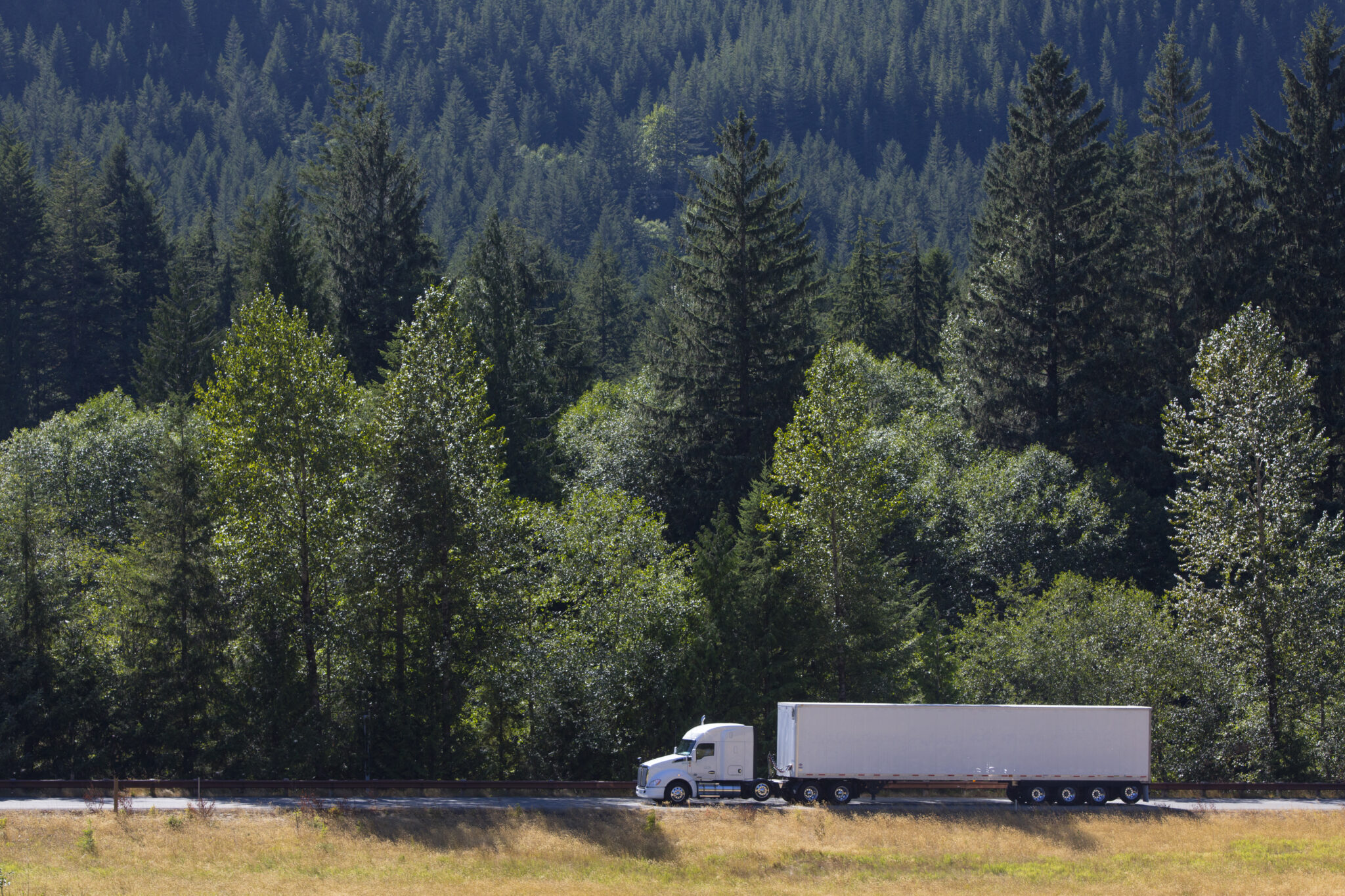When you’re moving to a new home, you probably have much on your mind. There’s a lot to think about, from house hunting to packing to logistics. For those of us committed to sustainability, the environmental impact of your move might be one more worry on your mind. And relocations can indeed generate a lot of waste, from single-use packing materials to the fuel consumed by moving trucks.
If sustainability is a priority for you and your family, embracing eco-friendly moving practices can lessen your move’s environmental impact and help streamline your moving experience. Here are some tips and strategies to help make your move more sustainable and low-stress!
1. Plan Your Move With Sustainability in Mind

You’ve heard the saying “When you fail to plan, you plan to fail.” Harsh, but it has some truth to it. Regarding eco-friendly moving decisions, we could rewrite the adage: “When you plan, you can make decisions that align with your priorities.” It’s not as catchy, but you get the idea! Planning helps you reduce waste, reduce the total volume of your cargo (and the fuel it takes to transport it!), and save you money! Here are some ways to keep a sustainable mindset while preparing to move.
Declutter Responsibly
Before you begin packing, take the time to declutter your home. Sorting through your belongings and deciding what to keep, donate, sell, or recycle can significantly reduce the items you need to move.
- Donate: Items in good condition can be donated to local charities, shelters, or community centers. This helps those in need and extends the life of your possessions.
- Sell: Host a garage sale or list items on online marketplaces like eBay, Craigslist, or Facebook Marketplace. You might even be able to offset some of your moving expenses!
- Recycle: Properly recycle items that are no longer usable. Check with your local waste management services for guidelines on recycling materials like electronics, batteries, paints, and solvents.
- Upcycle: Get creative by repurposing items you no longer need. Old clothing can become cleaning rags, and glass jars can be used for storage.
Choose an Eco-Friendly Moving Company
Choosing between DIY moving and a professional moving company is essential for a sustainable move. The right moving company can help make your move more eco-friendly. Ask a potential mover if they offer any of these options:
- Fuel-Efficient Vehicles: Some companies use fuel-efficient or hybrid trucks to reduce carbon emissions.
- Carbon Offset Programs: Ask your mover about carbon offset programs, which involve investing in environmental projects to balance out their emissions.
- Green Certifications: Verify the company’s commitment to sustainability by checking for certifications such as the Sustainable Business Certification or memberships in green organizations.
- Customer Reviews: Read reviews focusing on the company’s environmental practices to ensure they align with your values.
2. Opt for Sustainable Packing Materials

When it comes to waste in moving, one of the biggest culprits is packing materials. But did you know there are reusable, recycled, and biodegradable options? Here are some ways to prioritize eco-friendly moving with your packing supply choices:
Use Reusable Packing Supplies
Minimizing single-use packing materials can significantly reduce waste.
- Plastic Bins: Consider renting durable plastic bins instead of purchasing new cardboard boxes. These can be reused for future moves or storage needs. Professional movers (like Central) use sturdy, reusable totes that protect your items.
- Suitcases and Tote Bags: Pack non-fragile items using suitcases, tote bags, and storage containers you already own. This approach not only reduces waste but can also save money.
- Furniture Pads and Blankets: To protect delicate items during the move, use old blankets, towels, and clothing.
Choose Eco-Friendly Alternatives
When new packing materials are necessary, opt for sustainable options.
- Recycled Paper: Wrap fragile items in kraft paper or recycled newspaper. These materials are biodegradable and reduce the demand for new paper production.
- Biodegradable Packing Peanuts: Replace traditional styrofoam peanuts with biodegradable alternatives from cornstarch or other plant-based materials.
- Recycled Bubble Wrap: If you prefer bubble wrap, choose options made from recycled materials or look for companies that offer eco-friendly packaging solutions.
3. Reduce Transportation Emissions

Fuel usage and emissions are a concern when you’re prioritizing eco friendly moving. But well-planned routes and fuel-efficient vehicles are ways to reduce your environmental footprint. Here are some ways to make your move more sustainable and environmentally conscious:
Optimize Moving Trips
Efficient planning can significantly cut down on fuel consumption and emissions.
- Plan Routes Efficiently: Plan the most direct routes to minimize driving time and fuel usage. If you’re driving your vehicle, use GPS or mapping software to find the most efficient paths.
- Consolidate Moves: If possible, combine multiple trips or coordinate with friends and family to share transportation resources, reducing the total number of trips needed. Professional moving companies often transport cargo from multiple moves to minimize fuel usage (and also to save you money!).
Use Alternative Fuel Options
Exploring greener transportation options can further reduce your carbon footprint.
- Electric or Hybrid Trucks: If available, you might consider renting electric or hybrid moving trucks which produce fewer emissions compared to traditional diesel trucks.
- Public Transportation Partnerships: Some moving companies collaborate with public transportation services to offset their fuel usage through green initiatives.
- Carbon Credits: Consider investing in carbon credits to support projects like reforestation or renewable energy, effectively balancing out the emissions from your move.
4. Disposing of Hazardous Materials Responsibly
When you’re moving, it’s important to safely handle and dispose of items like chemicals and old electronics. By disposing of these items the right way, you help protect others as well as the environment.
- Identify Hazardous Items: Items such as batteries, electronics, paint, chemicals, and cleaning products require special handling. Talk with your local waste disposal facilities to learn where to take these kinds of items.
- Recycling Centers: Locate certified recycling centers or hazardous waste disposal facilities in your area. Many communities offer designated days for hazardous waste collection.
- Safe Storage: Temporarily store hazardous materials separately from your regular moving items to ensure professionals handle them correctly.
5. Support a Circular Economy
Reusing, repairing, and recycling materials minimizes waste and makes the most of resources. Instead of the traditional “take, make, dispose” approach, this “circular economy” focuses on keeping products and materials in use for as long as possible. Eco-friendly moving can include steps like donating unwanted furniture, renting reusable moving boxes, and recycling packing materials. Here are some ways to conserve resources, reduce environmental impact, and keep your move sustainable:
Borrow or Rent Moving Equipment
Reducing the need to buy new moving equipment supports a circular economy and minimizes waste.
- Equipment Rentals: Rent dollies, moving straps, and other necessary equipment instead of purchasing new items that may only be used once.
- Community Sharing: Borrow moving tools and supplies from neighbors or community groups to reduce waste and costs.
Pass Along Packing Supplies
After your move, ensure that packing materials are reused or recycled.
- Donate Supplies: Give leftover boxes, packing materials, and other supplies to friends, family, or local organizations who might need them.
- Reuse Creatively: Find new uses for packing materials in your new home, such as storage solutions or organizing tools.
6. Choose Sustainable Utility Practices in Your New Home

Congratulations! You planned ahead, made environmentally-conscious decisions during the move, and you’re ready to settle into your new home. Eco friendly moving doesn’t have to stop there! Here are some ways you can continue prioritizing sustainability in your new home:
- Energy-Efficient Appliances: Invest in appliances with high energy-efficiency ratings to reduce your household’s energy consumption.
- Smart Home Technology: Smart thermostats and lighting systems optimize energy use and minimize waste.
- Water Conservation: To reduce water usage, install low-flow faucets, showers, and toilets.
- Green Energy Providers: When available, research energy providers that offer renewable energy options, such as wind or solar power, to supply your home.
7. Partner With Local Sustainable Businesses
Supporting local businesses reduces transportation emissions and strengthens your new community.
- Local Movers: Hire local moving companies to minimize the distance your belongings need to travel, thus reducing fuel consumption.
- Eco-Friendly Vendors: Source packing materials from local eco-friendly vendors to ensure minimal transportation and support sustainable businesses.
- Community Initiatives: Engage with local environmental groups or community initiatives that promote sustainability, fostering a sense of connection and responsibility in your new area.
Finding a Partner in Eco-Friendly Moving

Here at Central Transportation Systems, we’re committed to providing eco-friendly solutions to make your move as smooth, sustainable, and low-stress as possible. We understand the challenges of moving, and we’ll make sure every aspect of your move is handled with care and professionalism. Here’s to minimizing your environmental footprint while maximizing your peace of mind!
Frequently Asked Questions
What are the best ways to recycle moving boxes?
The best ways to recycle moving boxes include:
- Reinforcing for Future Use: Reinforce boxes with tape and store them for your next move or future storage use.
- Donating: Give boxes to local shelters, community centers, or schools that can use them for storage or projects.
- Recycling Programs: Check with your local waste management services for specific recycling programs that accept cardboard boxes.
- Upcycling Projects: Use boxes for DIY projects like creating storage solutions, organizing your new home, or crafting with children.
How do I find eco-friendly moving companies near me?
Finding eco-friendly moving companies involves:
- Online Research: Use search terms like “eco-friendly moving companies” or “green movers” along with your location to find local options.
- Certifications: Look for companies with green certifications or memberships in sustainable business organizations.
- Customer Reviews: Read reviews highlighting the company’s environmental practices and customer experiences related to sustainability.
- Direct Inquiry: Contact moving companies directly to inquire about their eco-friendly initiatives, such as the use of fuel-efficient vehicles, recycling programs, and sustainable packing materials.
Are plastic moving bins better than cardboard boxes for the environment?
Plastic moving bins can be more environmentally friendly than cardboard boxes for several reasons:
- Reusability: Plastic bins are durable and can be reused multiple times, reducing the need for single-use cardboard boxes.
- Reduced Waste: By reusing bins, you decrease the waste generated from discarded cardboard.
- Longevity: Plastic bins last longer than cardboard boxes, making them a more sustainable option over time.
- Recyclability: Many plastic bins are recyclable, further minimizing their environmental impact compared to cardboard, which often ends up in landfills or recycling streams mixed with contaminants.
However, the overall environmental benefit depends on factors such as the production materials, lifecycle, and how effectively the bins are reused and recycled.






